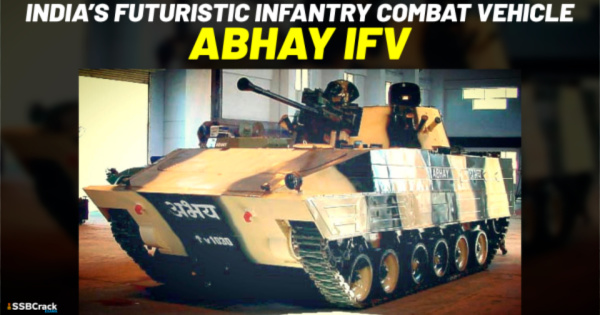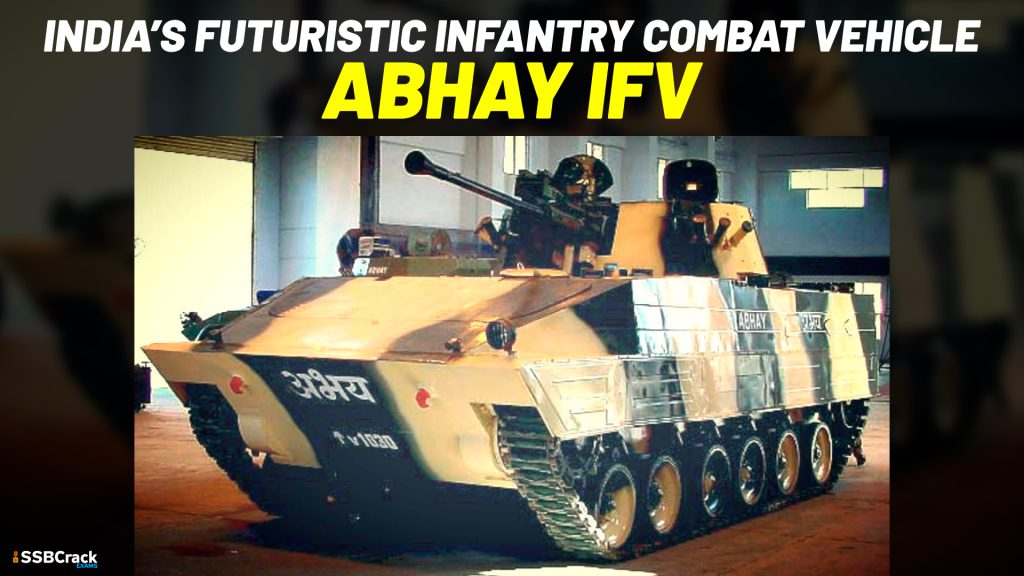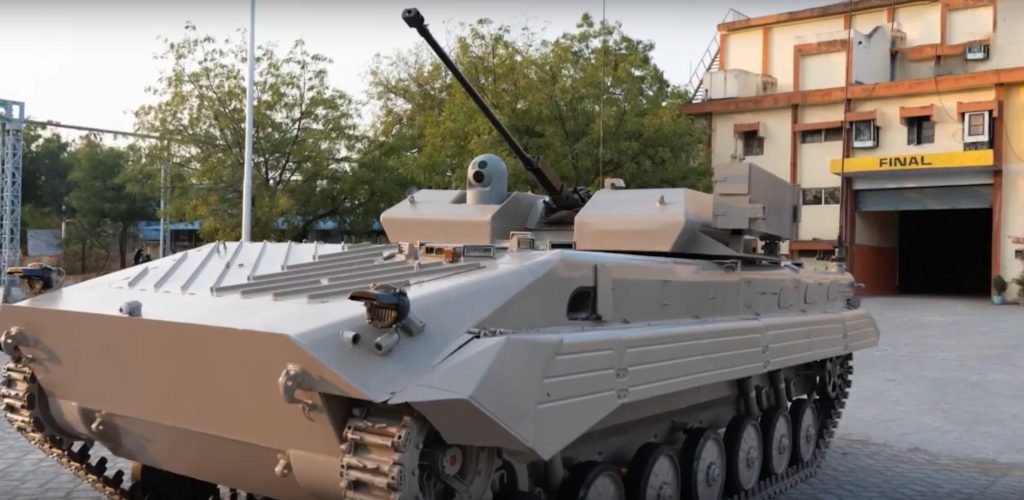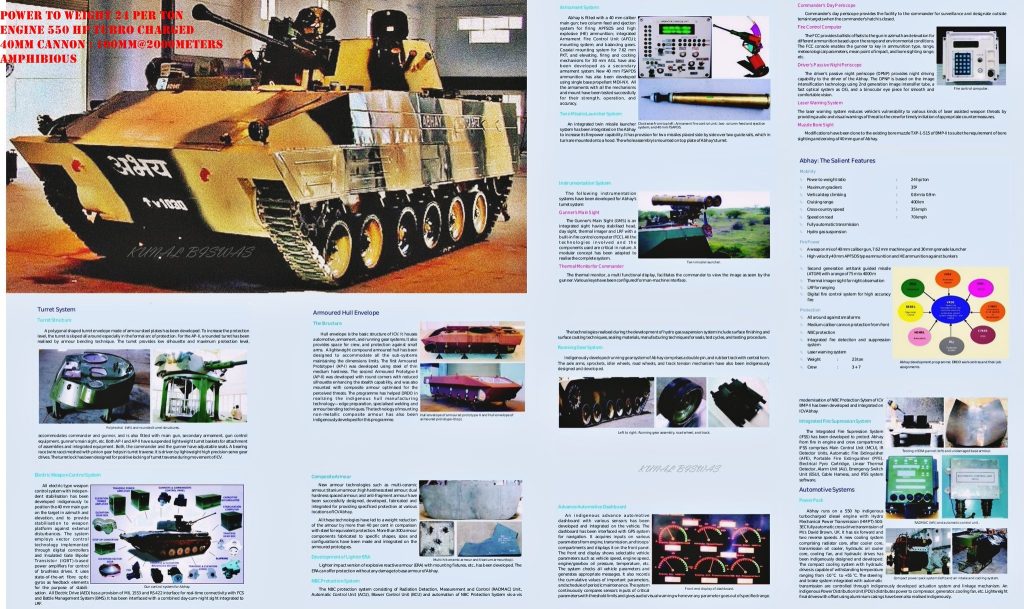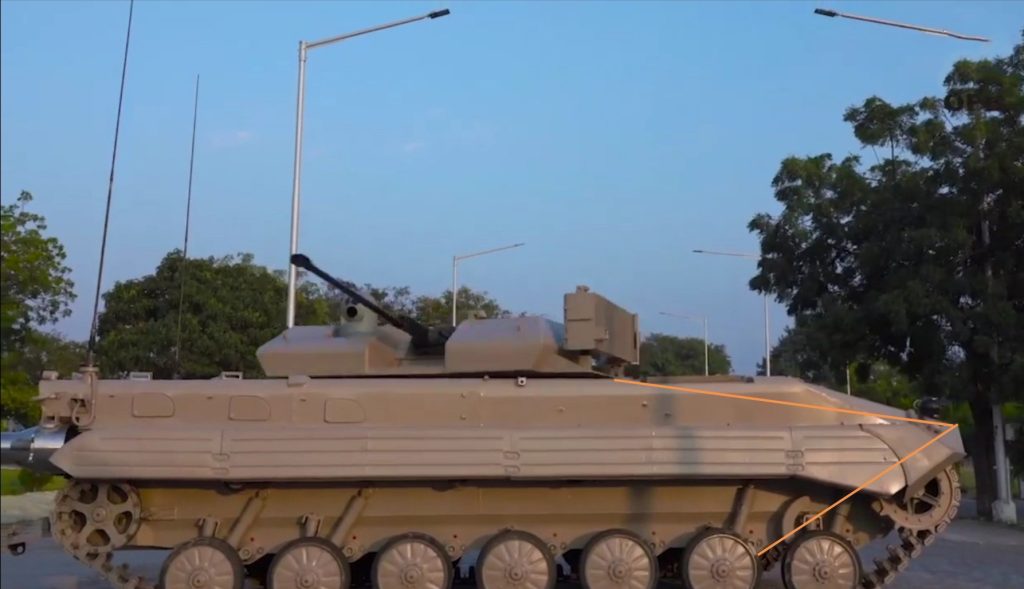India’s Futuristic Infantry Combat Vehicle is on hold since 2001. The troubled program, which has been in the pipeline since the 1990s has not seen daylight since then. Most of us would not what is FICV and is India really into procuring FICVs. In this article, we shall learn the same.
What is Abhay ICV?
The Defence Research and Development Organization in India is developing the Abhay Infantry Combat Vehicle (ICV) (DRDO). Abhay is being developed as a technology demonstrator for replacing various combat vehicles in the Indian Army. The design phase began in the 1990s and was completed in 2001. Various systems of this vehicle were in advanced stages of development as of 2005. The Indian military announced plans to deploy the Abhay ICV in 2027 by 2020.
Abhay works as a pre-technology demonstrator, developing and testing technologies that will be used on a futuristic ICV (FICV), which will replace the Indian Army’s BMP-2 vehicles. The project began in the late 1990s and was completed in 2001. However, the project was delayed due to US sanctions imposed following the Pokhran-II nuclear tests.
Also read: Significance Of M4 Armoured Vehicles For The Indian Army
Abhay is being developed by the DRDO’s Ahmednagar-based Vehicles Research & Development Establishment (VRDE). The Abhay has a Mild Steel (MS) prototype that is being tested for automotive systems. The pre-production prototype was unveiled in June 2005. The first armored prototype is also being developed. The FICV will be fast-tracked, it was announced in September 2019. In an interview published in January 2020, Army Chief Manoj Mukund Naravane stated that the FICV will be inducted in 2026-27.
Specifications of IFV Abhay
Firepower
Abhay has an all-electric turret drive system and a 40 mm high-velocity cannon that can fire APFSDS and high explosive rounds. At 1 km, the 40MM APFSDS round has an effective penetration of 100 mm RHA. The 40 mm cannon has an anti-air range of 4 km and a ground attack range of 2.5 km. The ICV is equipped with 210 rounds of ammunition, and its turret, which houses a thermal imager based on the Catherine FC, also houses a twin launcher for the Kornet-E ATGM (anti-tank guided missile).
Fire Control System
For the turret, the DRDO developed an electro-mechanical all-electric drive (AED) with independent stabilization in collaboration with the private sector industry. The AED’s purpose is to provide twin-axis turret stabilization against external disturbances and to position the 40 mm cannon on the target in azimuth and elevation.
Also read: Top 5 Vehicles Used By The Indian Army
Mobility
Abhay is powered by a Greaves Cotton TD2 V8 410 kW (550 hp) diesel engine with a power-to-weight ratio of 24 hp/tonne and an L-3 Communications automatic gearbox. The hydro-pneumatic suspension improves passenger comfort. These factors will provide Abhay with exceptional mobility and speed.
Protection
Abhay is outfitted in composite armor. Two prototypes were created. The first was outfitted with steel armor, while the second was outfitted with composite armor. When compared to steel, composite armor is 40% lighter. A lighter ERA has been created for use on the Abhay.
The Dire Need for Indian FICV
As a result of the Krishna Rao Committee Report, the Father of Mechanised Infantry, General Sunder Ji, initiated the thought process of mechanized warfare in its true sense (still a secret document). The Indian Army’s fifty-odd Mechanised Infantry Units were to be always equipped with cutting-edge Infantry Combat Vehicles (ICV), and thus the second generation BMP II (Russian origin) was inducted. Ironically, the mechanized infantry is still outfitted with the same ICV of vintage 1980s technologies in night fighting, armament, protection, and power pack.
With the goal of replacing vintage ICVs at the end of their service life, the FICV Project was launched in 2008 with the goal of having world-class ICVs made in India with futuristic technologies such as 3rd generation Fire control system, fully night enabled, greater protection, and higher power to weight ratio.
Also read: Importance Of Indian Army’s New Polaris MRZR All-Terrain Vehicle
Since then, the project has been beset by controversies and delays. It was given the Acceptance of Necessity by the Defence Acquisition Council (DAC) in October 2009, kicking off a major modernization project of the Indian Army’s mechanized forces. However, the Expression of Interest issued in 2010 was withdrawn in December 2012 due to perceived inconsistencies in the selection process for Development Agencies.
The vacillations in the MoD have manifested in seriously undermining the Army’s capability after over 30 years, since the perceived need, and 12 years in the works, with on-and-off rumors of the project being shelved-progressed-shelved. The situation has become even more threatening as the belligerent neighbors continue to modernize their mechanized forces with cutting-edge technology. In the last few years, China has increased the strength of its armored resources in the Tibet Autonomous Region bordering India by seven to eight times, and Pakistan is bolstering its forces by rapidly modernizing its tanks and ICV fleet.
In Tibet, the PLA has deployed the ZBD-04, also known as the WZ502, which is equivalent to Russia’s BMP II and has a main armament of 100mm and a coaxially mounted 30mm cannon with enhanced protection and power pack.
Conclusion
I hope now that this article night has cleared some of your views regarding IFVs and the urgent need for India on its borders to face China and Pakistan. The emerging need for a modern ICV, which has been felt for many years, will not see the light of day, not only in the 2027-32 plan but even in the distant future. The Indian Army’s modernization program thus suffers the same fate as in many other cases due to procedures and lapses.
To crack the SSB Interview and join the Indian Army as an Officer, You can join our SSB interview live classes batch and we recommend you to Enroll SSB INTERVIEW ONLINE COURSE. Trusted by thousands of defence aspirants.
Also read:
